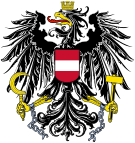
Back الانتخابات التشريعية النمساوية 2017 Arabic Skupštinski izbori u Austriji 2017. BS Eleccions legislatives austríaques de 2017 Catalan Parlamentní volby v Rakousku 2017 Czech Nationalratswahl in Österreich 2017 German Αυστριακές βουλευτικές εκλογές (2017) Greek Elecciones generales de Austria de 2017 Spanish انتخابات سراسری اتریش (۲۰۱۷) Persian Itävallan parlamenttivaalit 2017 Finnish Élections législatives autrichiennes de 2017 French
| |||||||||||||||||||||||||||||||||||||||||||||||||||||||||||||||||||||||||||
All 183 seats in the National Council 92 seats needed for a majority | |||||||||||||||||||||||||||||||||||||||||||||||||||||||||||||||||||||||||||
|---|---|---|---|---|---|---|---|---|---|---|---|---|---|---|---|---|---|---|---|---|---|---|---|---|---|---|---|---|---|---|---|---|---|---|---|---|---|---|---|---|---|---|---|---|---|---|---|---|---|---|---|---|---|---|---|---|---|---|---|---|---|---|---|---|---|---|---|---|---|---|---|---|---|---|---|
| Opinion polls | |||||||||||||||||||||||||||||||||||||||||||||||||||||||||||||||||||||||||||
| Turnout | 80.0% ( | ||||||||||||||||||||||||||||||||||||||||||||||||||||||||||||||||||||||||||
| |||||||||||||||||||||||||||||||||||||||||||||||||||||||||||||||||||||||||||
| |||||||||||||||||||||||||||||||||||||||||||||||||||||||||||||||||||||||||||
| This article is part of a series on the |
| Politics of Austria |
|---|
 |
Legislative elections were held in Austria on 15 October 2017 to elect the 26th National Council, the lower house of Austria's bicameral parliament. The snap election was called when the coalition government between the Social Democratic Party of Austria (SPÖ) and Austrian People's Party (ÖVP) was dissolved in May by the latter party's new leader Sebastian Kurz.
The ÖVP took a strong lead in opinion polls after Kurz's confirmation as leader, and emerged as the largest party in the election, with 31.5% of the vote and 62 of the 183 seats in the National Council. The SPÖ finished second with 52 seats, just ahead of the Freedom Party of Austria (FPÖ), which won 51 seats. NEOS was fourth with 10 seats. The Greens failed to pass the 4% electoral threshold and lost parliamentary representation for the first time since winning seats in the 1986 elections. The Peter Pilz List, which had split from the Greens at the start of the campaign, received 4.4% of the vote and won 8 seats.
Sebastian Kurz claimed victory on election night.[1] Incumbent Chancellor and SPÖ leader Christian Kern announced that he was willing to consider a coalition with the FPÖ, though he said that the likelihood of such a coalition was very small.[2] Kurz was formally invited to form a government on 20 October, and began coalition talks with FPÖ leader Heinz-Christian Strache four days later. Negotiation teams on both sides were established to work on a coalition agreement.[3] The talks proved to be successful and led to the formation of the first Kurz government on 18 December.
- ^ "Austria likely takes a right turn as 31-year-old minister declares victory in election". CNBC. 15 October 2017.
- ^ "Kern ist offen für Gespräch mit Strache". de:Heute (österreichische Zeitung). 18 October 2017.
- ^ Austrian conservatives and far right to start coalition talks Politico, 24 October 2017









